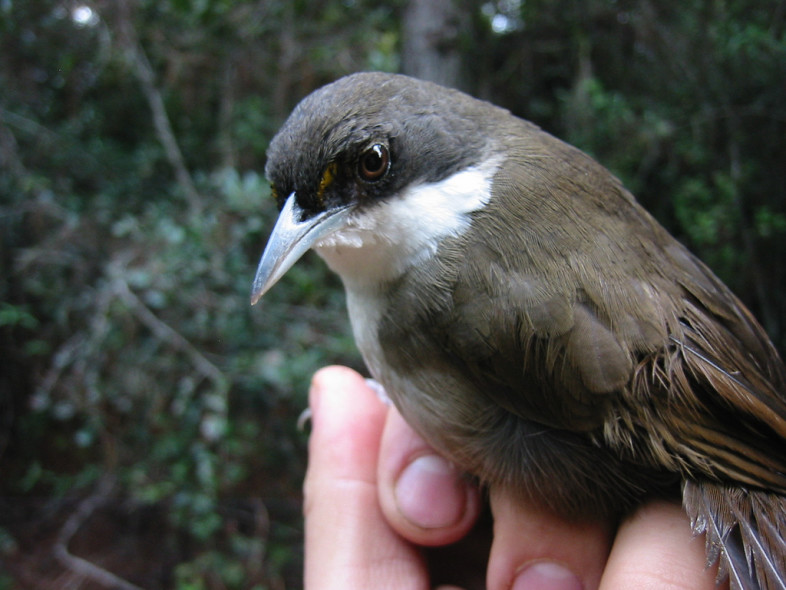
A Western Chat-Tanager (Calyptophilus tertius) banded in the Sierra de Bahoruco, Dominican Republic and ready for release. This species is now recognized as Threatened in the latest update to the IUCN Red List.
The International Union for the Conservation of Nature (IUCN) announced last week a major update to the Red List, its authoritative assessment of the conservation status of the world’s species. Several of the changes to the Red List received wide coverage in the news media, perhaps most notably the bad news about giraffes, now considered vulnerable to extinction on the heels of a substantial decline in numbers since 2015.
From an ornithologist’s perspective, one of the most interesting elements of the Red List update was the inclusion of 742 species of birds not previously recognized as species, 82 of which are now considered threatened (depressingly, 13 of the newly added species fall into the “we hardly knew ye” category: declared extinct at the same time they were first recognized as species). These 742 birds are not creatures entirely new to science, but instead were mostly forms not previously considered distinct enough to warrant recognition as full species. Changes in the number of species recognized and included in the Red List are due largely to increasingly sophisticated tools for genetic analysis, changing conceptions among scientists about what constitutes a species, and renewed efforts to document and describe global biodiversity. Given ongoing debates in ornithology about the seemingly straightforward question of how many bird species exist on the planet – for an interesting answer to this question, read this new paper from PLOS ONE – it is unlikely that this will be the last big addition of birds to the IUCN Red List.
One of the new birds added to the Red List hit quite close to home here at VCE. The Western Chat-tanager, previously lumped together with the Eastern Chat-tanager, is an Hispaniolan endemic newly added to the Red List and now considered threatened (a designation that it shares with Bicknell’s Thrush). It’s also a species that we’ve spent lots of time thinking about. Genetic studies by our colleague Andrea Townsend helped establish that Western Chat-tanager was a distinct species. Our own Chris Rimmer also provided the first description of the nest and eggs of Western Chat-tanager, and earlier this year we published an assessment of the conservation status of the species based on our long-term research study in the Dominican Republic. Although hard to cheer for seeing the species listed as threatened, from a practical standpoint this recognition may help direct resources towards conservation of Western Chat-tanangers and towards the protection of the Hispaniolan mountain forests that they – and Bicknell’s Thrush – depend upon.
